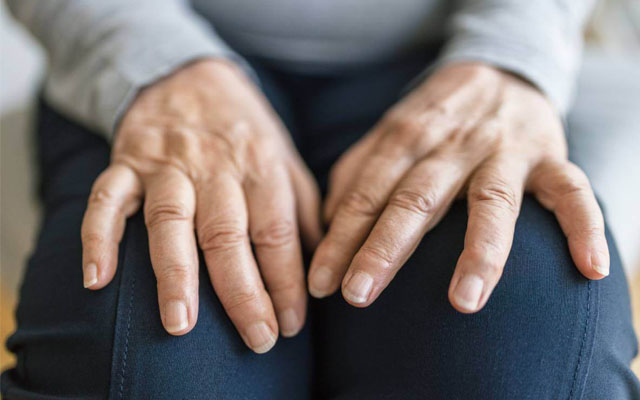How menopause is linked to osteoarthritis in women.
Menopause and osteoarthritis are two important aspects of women's health that are often linked together.

Menopause is a normal transition in a woman's life, while osteoarthritis is about bone health. How are these two issues connected, and what is the importance of prevention and bone care during and after menopause?
Menopause: The Physiological Transition
Menopause refers to the cessation of a woman's menstrual flow and is part of the normal biological cycle. It usually occurs around the age of 45-55, but can occur earlier or later in a woman's life. This normal transition is due to a decrease in the production of female estrogen and progesterone. Estrogens are responsible for many functions in the body, including maintaining bone health.
Osteoarthritis : The Bone Disease
Osteoarthritis, the most common type of arthritis, occurs when the cartilage between the bones wears away and allows the bones to rub against each other. This condition can cause significant pain, tenderness and loss of flexibility in the joints. Osteoarthritis can affect virtually all bones in the body ,but most commonly occurs in the knees, hips, hands and spine.
The Relationship between Menopause and Osteoarthritis
During menopause, estrogen production decreases significantly. Estrogens have an essential role in maintaining bone health, as they promote the absorption of calcium from bone and the conversion of vitamin D. In menopause, the decrease in estrogen affects this balance, causing loss of bone density. Menopause can cause your joints to deteriorate prematurely and leave you vulnerable to serious and potentially permanent joint and bone damage. While most women experience this problem after their 50s, those who experience early menopause experience joint and bone problems earlier and for longer.
The various factors that lead to osteoarthritis during menopause
The causes of osteoarthritis during menopause are mainly due to the lack of estrogen, which, as we saw earlier, is very important for bones as it promotes their growth and strengthening. Without these elements, bones no longer have sources of supply and are therefore unable to maintain themselves over time.
However, estrogen depletion does not appear to be the only factor, as there are other factors that combine to promote the progression of this disease such as :
1. Heredity
2. Decreased calcium intake
3. Lack of physical activity
4. Use or abuse of certain medications,
There are some drugs, such as corticosteroids, that affect bone composition.
5. Smoking and Alcohol
Understanding these factors is critical to preventing osteoarthritis during menopause. By adopting healthy eating habits, active lifestyles and avoiding bad habits, we can ensure that we maintain healthy bones, even during menopause.
Awareness of the link between menopause and osteoarthritis can help women take steps to maintain their bone health. With proper prevention and care, we can ensure a healthy and active life after menopause.

